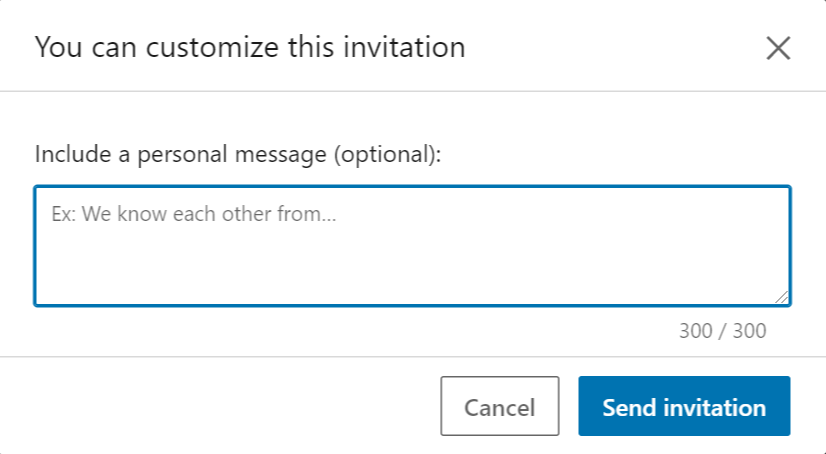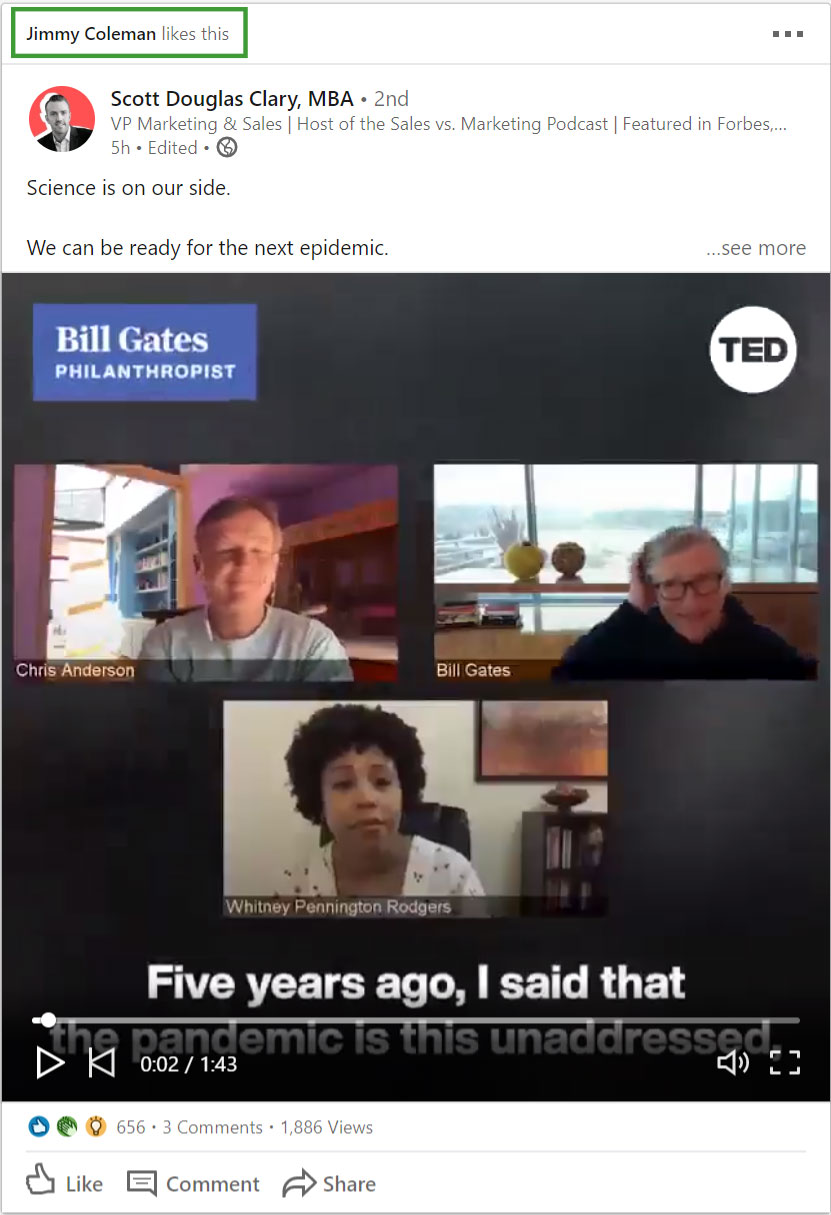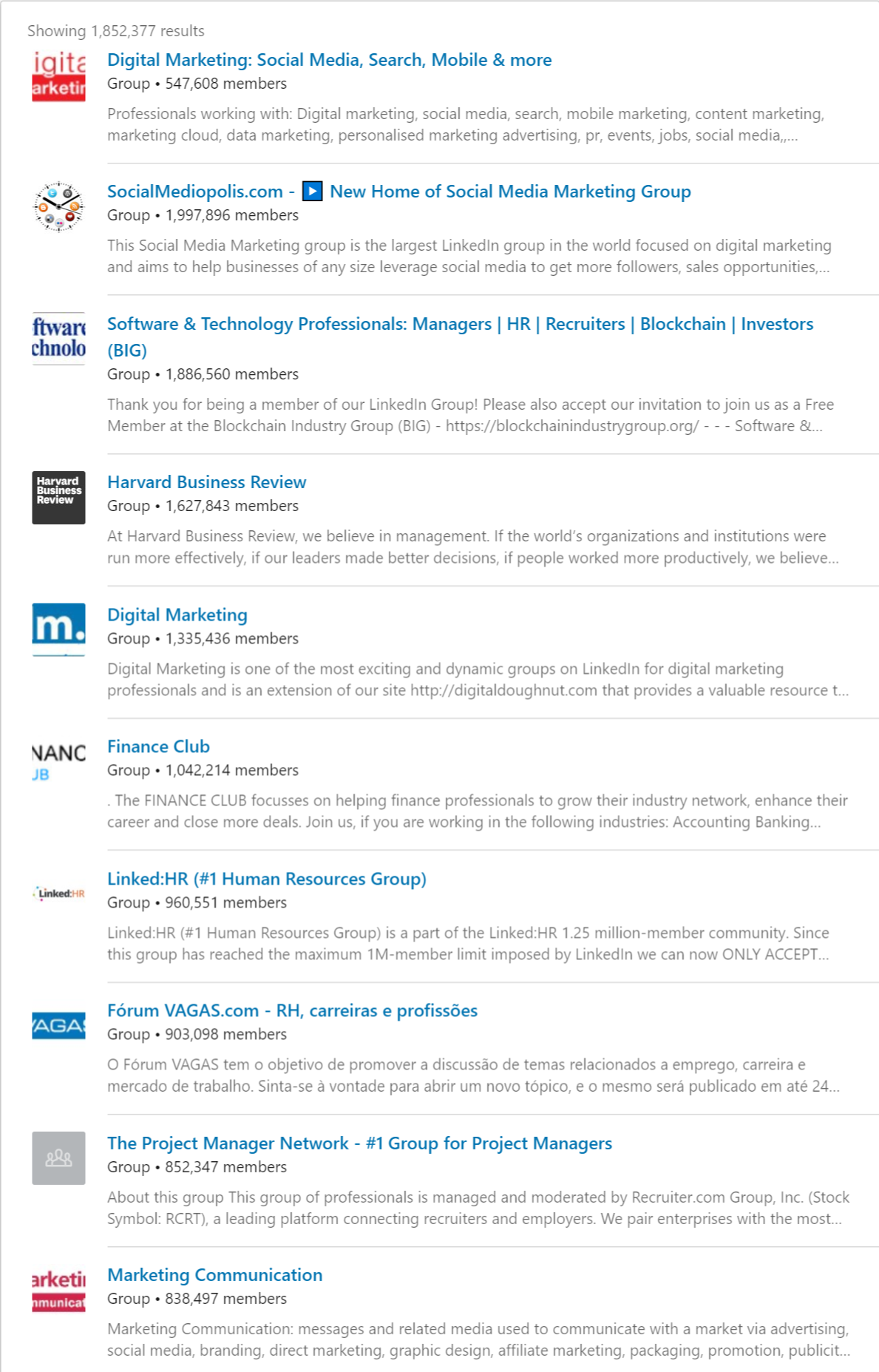While 500 connections is ideal, you should never add individuals just to add them. Only request to connect with those that you already know or have a thoughtful reason to connect. Be purposeful, as you do not want to be sending out dozens of unsolicited connections daily. LinkedIn may see this as spam and lock your account. If a handful of individuals flag you as spam in a day, you can run into issues.

Networking is Easy
LinkedIn makes it easy to network with people you already know by importing your contacts.

Quality > Quantity
Your network is not valuable if your audience is irrelevant. Keep this in mind and be selective, prioritizing purposeful growth.

Degrees of Separation
LinkedIn's network is based on degrees of separation. If an individual isn't at least a 1st or 2nd degree connection, you may not be able to send a connection request.
During the initial LinkedIn signup, you may be prompted to add or import contacts. Skip this portion of the signup process and wait until your profile is optimized and you’ve started to share content.
TIP - Make a point to revisit this page quarterly to add any contacts you may have made which you haven't yet connected with.
Here are a few examples of connections you’ll want to make a habit of making:
On LinkedIn, searching for connections is called “people browsing.” In its basic form, you can find certain individuals by searching for their name when you want to find someone you’ve met. However, there are many ways to filter search results to help you find prospects easily. Please see the People Browsing section toward the bottom of this playbook.
Whenever you send a connection request, we suggest doing it from the profile of the individual you want to connect to. This way, you can make sure you’re able to add a note to your request.

If you're reaching out to a prospective client (or even a current client!) you need to make a great impression─ especially if it's your first interaction. "I'd like to connect with you on LinkedIn." Just doesn't cut it. You'll want to maximize the 299 characters you're allotted to make your prospective client want to connect with you and respond to you.
A framework that captures perfectly how you should frame each connection request is The 5P's:
These "5 P's" will make sure you're able to make a great impression and have a greater chance of a follow-up after an initial reaction. Once you've researched a prospect and are ready to make the connection, keep these in mind. While being personal is most definitely encouraged, keep templates for scenarios that you can customize for your common use cases. This will save you valuable time and still allow for effective networking.
1. 5P’s source: MarketingLand
While purposeful engagement and networking within LinkedIn itself is the best way to see results, you may want to advertise your profile offline. You'll only want to do so if you're committed to being active on the platform and have made it a part of your routine. There is little sense in promoting your profile to clients or prospects if you're unable to be responsive to connections and messages there.
Ensure that you receive proper compliance approval for any additions you make to your email signature.
As a representative of the NLG brand, we ask that you refrain from engaging with any financial services business-related content, competitor pages or their agents, investment advice content, or any potentially political or controversial content shared on LinkedIn. Please see our official Social Media Policy for more information.
While it's important to share approved content on social, it's also necessary to engage with others on LinkedIn. It's not a one-way street─in addition to posting, you'll want to engage with content from others to increase visibility and nurture relationships.
You'll want to engage with current clients and prospects, liking or leaving positive and thoughtful comments on their posts, life updates or otherwise. It's a great way to increase your exposure and put you top of mind for both your connection and maybe even their audience.
A few examples of content you may want to like or comment on:
Life updates or events - marriage, job changes and anniversaries, launching a company, having a child, birthdays, graduations, etc.
Lifestyle or hobby content - if it's not related to our business, it's a great way to start a conversation and perhaps attract attention. For example, if a connection shares an article about sailing and you're also an enthusiast, you can thank them and add to the conversation. "Great read, thanks John! Makes me want to get to the lake."
Articles or news not related to the financial services industry - For example, if you're into tech news or renewable energy, you could leave a like or comment on a post shared by a connection.
Please note that your engagement with content on LinkedIn will be displayed on your profile in your "activity" section and may be displayed in other people's feeds. For example, if you make a comment on a sailing article, other people in your network may see that content and that you have interacted with it.
While this may be a good thing as it can amplify the reach of your interactions, it's also a reason that you need to ensure you are not engaging with the wrong content or sources of content.


There may be value in joining groups, especially local community groups or professional development groups. There are millions of groups available on LinkedIn to join that can help you network and learn.
